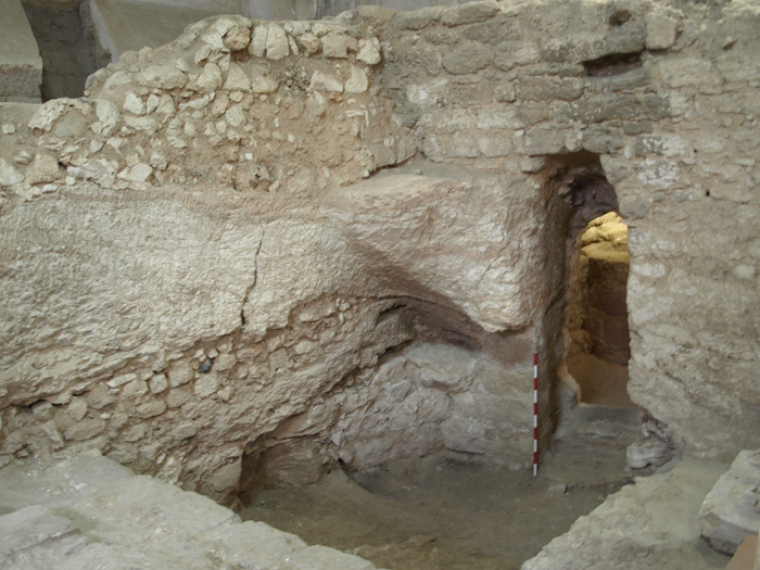Jesus' House in Nazareth Found? Archaeologists Claim Childhood Home in Israel Discovered

Archaeologists recently claimed that a house in Nazareth in Israel was where Jesus was raised by Mary and Joseph.
The house, made up of mortar-and-stone walls and cut into a rocky hillside, was first discovered in the 1880s by nuns at the Sisters of Nazareth convent, according to Live Science.
But it was in 2006 that archaeologists led by Ken Dark, a professor at University of Reading in the U.K., declared it as a place where people believed Jesus grew up. Dark said it was possible that Jesus lived in the house.
"Was this the house where Jesus grew up? It is impossible to say on archaeological grounds," wrote Dark in the Biblical Archaeology Review. "On the other hand, there is no good archaeological reason why such an identification should be discounted."
According to the Live Science report, archaeologists said the Byzantine Empire, which supervised Nazareth up to the seventh century, decorated the house with mosaics and built a church called "Church of the Nutrition" over the house to protect it.
Artifacts found in the supposed Jesus' house included broken cooking pots, spindle whorl and limestone vessels, which suggested that a Jewish family lived there, a conclusion that would support the idea that the house could be Jesus'.
Dark wrote in the review that the house "had been constructed by cutting back a limestone hillside as it sloped toward the wadi (valley) below, leaving carefully smoothed freestanding rock walls, to which stone-built walls were added."
"The structure included a series of rooms," according to Dark. "One, with its doorway, survived to its full height. Another had a stairway rising adjacent to one of its walls. Just inside the surviving doorway, earlier excavations had revealed part of its original chalk floor."
The archaelogists said the house was abandoned in the first century and was later used for quarrying and burial ground.
Two tombs were built beside the abandoned house.
Centuries after Jesus' time, the Church of the Nutrition was built around the house and the tombs. But by the eight century, the house was already in a state of disuse. It was later rebuilt in the 12th century but was burned down in the 13th century.
"Great efforts had been made to encompass the remains of this building within the vaulted cellars of both the Byzantine and Crusader churches, so that it was thereafter protected," Dark wrote.
He added: "Both the tombs and the house were decorated with mosaics in the Byzantine period, suggesting that they were of special importance, and possibly venerated."
Dark said the tomb cutting through the house is commonly referred to as the Tomb of St. Joseph.
"However, it is unlikely to be the actual tomb of St. Joseph, given that it dates to after the disuse of the house and localized quarrying in the first century," Dark told Live Science.
 Christians don't have to affirm transgenderism, but they can’t express that view at work: tribunal
Christians don't have to affirm transgenderism, but they can’t express that view at work: tribunal Archaeology discovery: Medieval Christian prayer beads found on Holy Island
Archaeology discovery: Medieval Christian prayer beads found on Holy Island Presbyterian Church in America votes to leave National Association of Evangelicals
Presbyterian Church in America votes to leave National Association of Evangelicals Over 50 killed in 'vile and satanic' attack at Nigerian church on Pentecost Sunday
Over 50 killed in 'vile and satanic' attack at Nigerian church on Pentecost Sunday Ukrainian Orthodox Church severs ties with Moscow over Patriarch Kirill's support for Putin's war
Ukrainian Orthodox Church severs ties with Moscow over Patriarch Kirill's support for Putin's war Islamic State kills 20 Nigerian Christians as revenge for US airstrike
Islamic State kills 20 Nigerian Christians as revenge for US airstrike Man who served 33 years in prison for murder leads inmates to Christ
Man who served 33 years in prison for murder leads inmates to Christ


 Nigerian student beaten to death, body burned over ‘blasphemous’ WhatsApp message
Nigerian student beaten to death, body burned over ‘blasphemous’ WhatsApp message 'A new low': World reacts after Hong Kong arrests 90-year-old Cardinal Joseph Zen
'A new low': World reacts after Hong Kong arrests 90-year-old Cardinal Joseph Zen Iran sentences Christian man to 10 years in prison for hosting house church worship gathering
Iran sentences Christian man to 10 years in prison for hosting house church worship gathering French Guyana: Pastor shot dead, church set on fire after meeting delegation of Evangelicals
French Guyana: Pastor shot dead, church set on fire after meeting delegation of Evangelicals ‘Talking Jesus’ report finds only 6% of UK adults identify as practicing Christians
‘Talking Jesus’ report finds only 6% of UK adults identify as practicing Christians Mission Eurasia ministry center blown up in Ukraine, hundreds of Bibles destroyed: 'God will provide'
Mission Eurasia ministry center blown up in Ukraine, hundreds of Bibles destroyed: 'God will provide' Church holds service for first time after ISIS desecrated it 8 years ago
Church holds service for first time after ISIS desecrated it 8 years ago Burger King apologizes for 'offensive campaign' using Jesus' words at the Last Supper
Burger King apologizes for 'offensive campaign' using Jesus' words at the Last Supper Uganda: Muslims abduct teacher, burn him inside mosque for praying in Christ’s name
Uganda: Muslims abduct teacher, burn him inside mosque for praying in Christ’s name